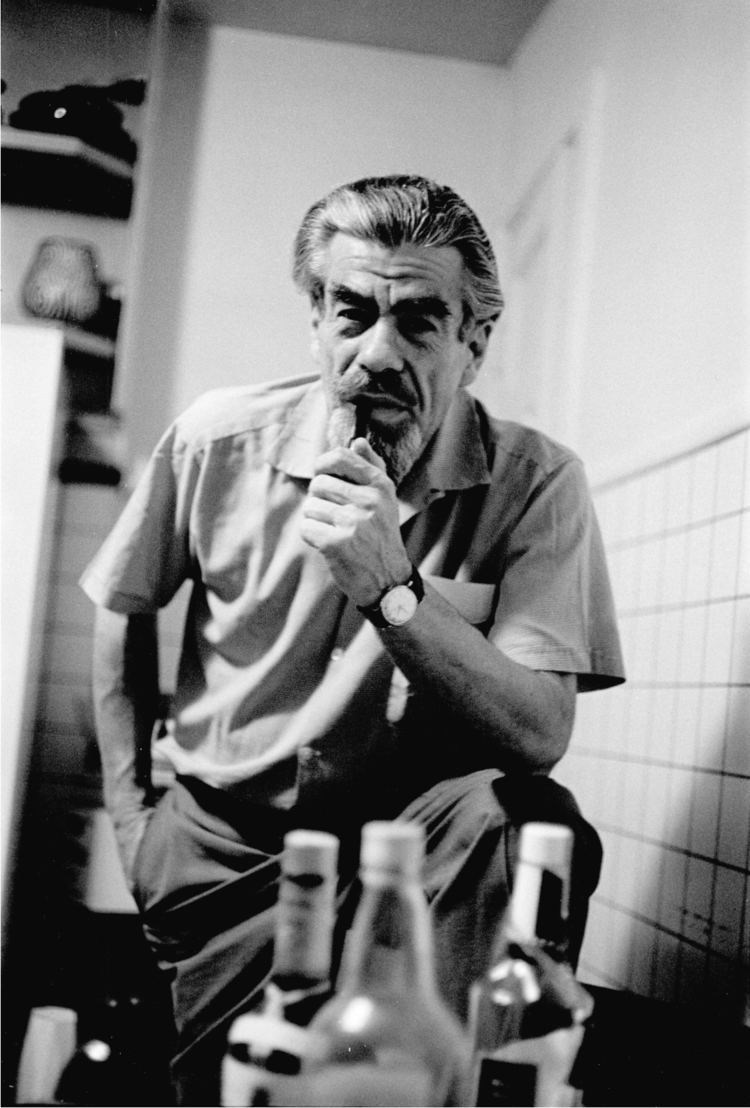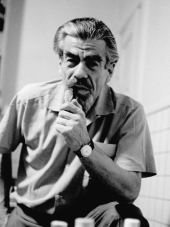Name Carl Dair Books Design with type | Role Author | |
 | ||
Died September 28, 1967, Toronto, Canada | ||
Carl Dair is one of Canada's preeminent designers and he left a lasting legacy as a teacher, type designer, design practitioner, and author. Even though he was primarily a self-taught designer, Dair would emerge to win international recognition and codify visual design principles still relevant today.
Contents
Biography

Dair was born in Welland, Ontario, in February 1912. Dair's first job as an 18-year-old was creating advertising and layouts for the Stratford Beacon-Herald. He would move on to form a partnership with Henry Eveleigh and set-up the Dair-Eveleigh Studio from 1947-51 in Montreal, Quebec. He worked principally as a freelance designer on a variety of jobs from department store art director to the typographic director for the National Film board of Canada (1945). Dair lectured on typography at the Ontario College of Art between 1959 and 1962, as well as teaching at the Jamaica School of Arts and Crafts for two years.

With the publication of Design with Type in 1952, revised and republished in 1967, he demonstrated a deep understanding of how to design using primarily type and formal design principles. He outlined visual principles of harmony and contrast codifying seven kinds of typographic contrast: size, weight, structure, form, texture, colour, and direction. "Contrast is the opposite of concord; it is based on a unity of differences." Design with Type became the first Canadian book to receive the Book of the Year Award from the American Institute of Graphic Arts (AIGA). It was republished by the University of Toronto Press (First Edition) in 2000.
The period from 1956-57 was extremely productive for Dair when he received the RSC fellowship to study type design and manufacture in the Netherlands. During this period he had the opportunity to study metal type and hand-punching at Enschede Foundry in Haarlem, Netherlands, where he created a silent film called Gravers and Files documenting "one of the last great punchcutters, P. H. Radisch, demonstrating his craft—it is perhaps the only such film in existence". His experiences at Enschede were also a formative influence in the typeface, for instance, Dair later created a typeface called Cartier.
Cartier was commissioned and released for Canada's 1967 centenary celebrations. The original design was based on hand-lettering and had some failings as a typeface until it was sensitively adjusted by Rod McDonald for Monotype Imaging and released in 2000. Cartier can be identified as an attempt to create a regional typeface for Canada. "It is now widely used and appears to have achieved the status of an identifiable national type."
Through his practice, teaching, and writing, Dair built an international reputation and received a number of awards. In 1959, he was awarded the silver medal at the Internationale Buchkunst-Austellung in Leipzig, East Germany. In 1962, The Royal Canadian Academy of Arts awarded him its Arts Medal. In 1967, he became a fellow in the Graphic Designers of Canada (GDC).
Carl Dair died on the flight from New York City to Toronto on September 28, 1967. The Faculty of Fine Arts at York University honors Dair's contribution to design in Canada with the Carl Dair Memorial Scholarship. A large collection of Dair's work can be seen on Centre for Contemporary Canadian Art website.
Typefaces
Typefaces Designed by Carl Dair:
Quotes
Letters are like molecules when they combine with one another. (Dair, 1967)
Typographical rhythm is no less a rhythm because it exists only in space and is perceived instantaneously. (Dair, 1967)
Publications
Dair, C. Design with type. Toronto: University of Toronto Press, (1952; 2nd ed 1967)
A Typographic Quest, 6 pamphlets published by Westvaco Papers in the 1960s
Dair, C. (Director). (1957). Gravers and Files [Film].
